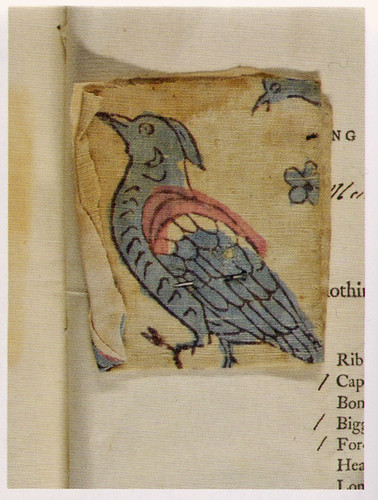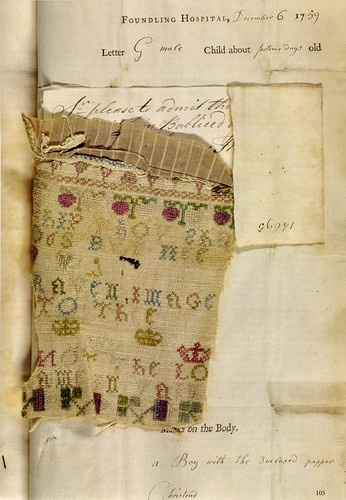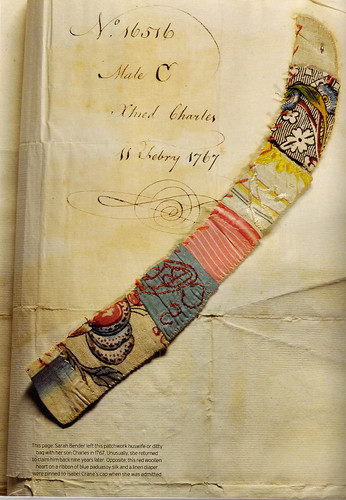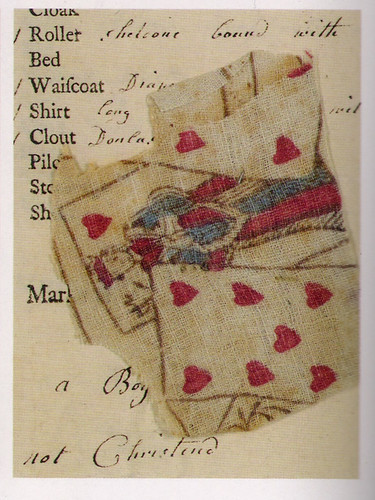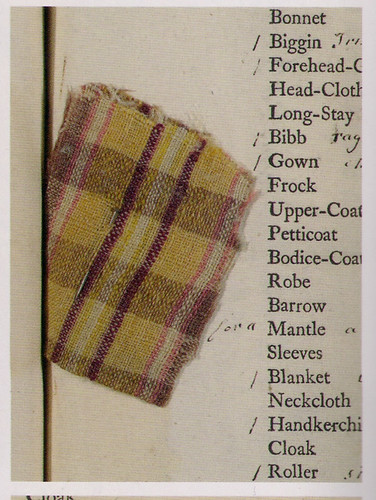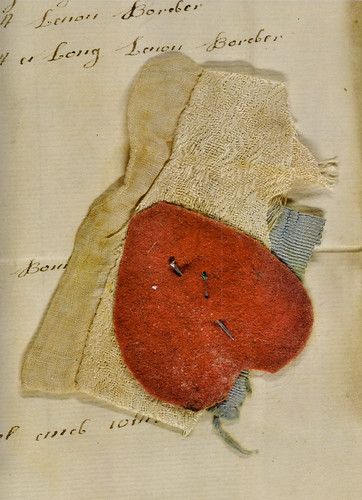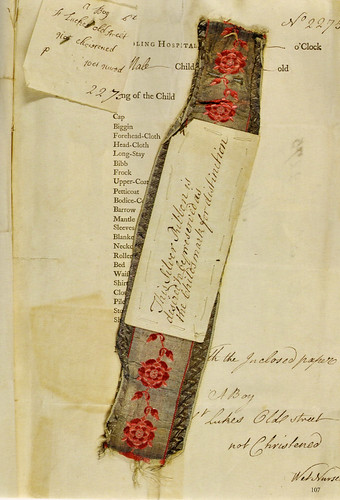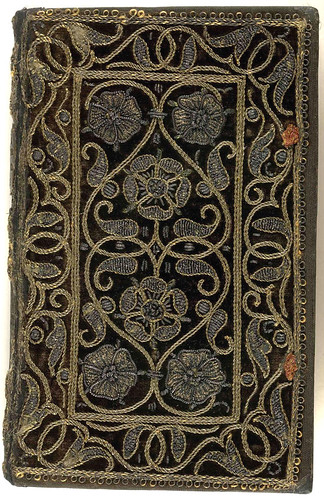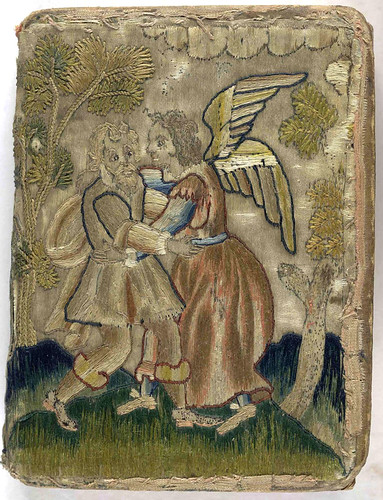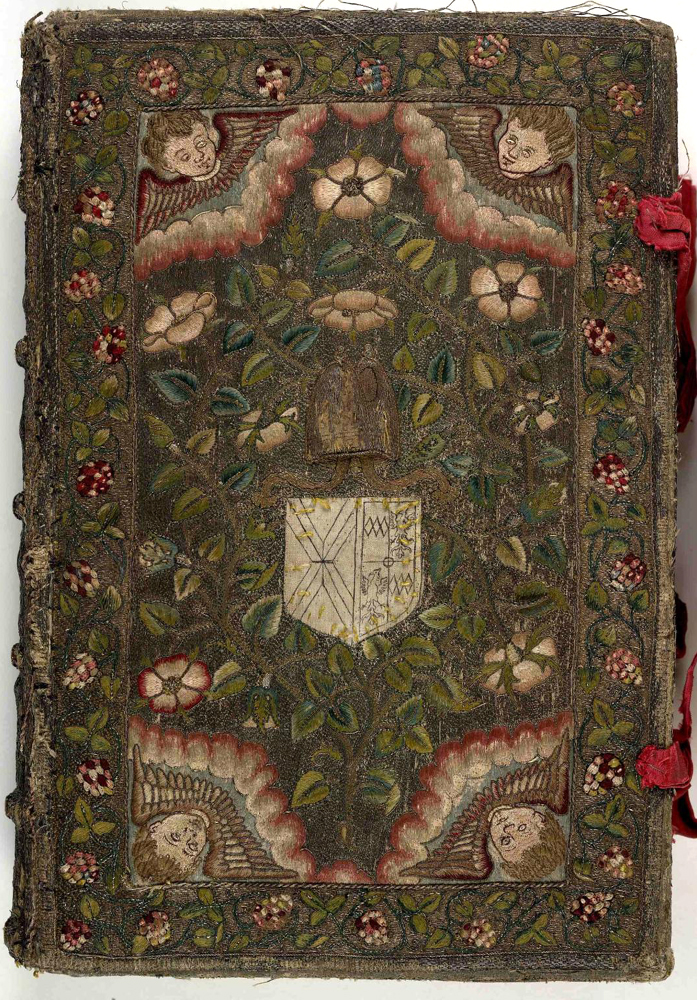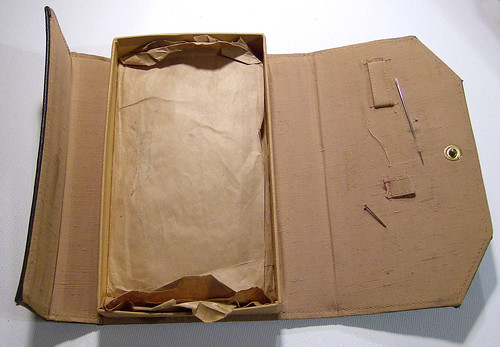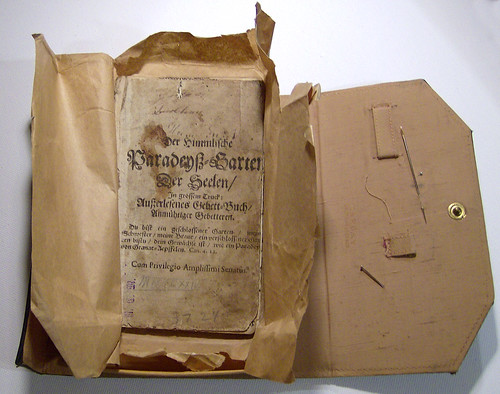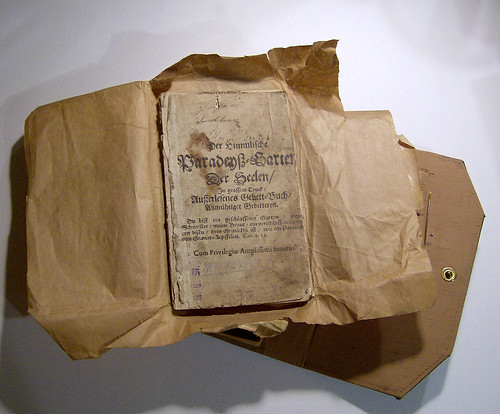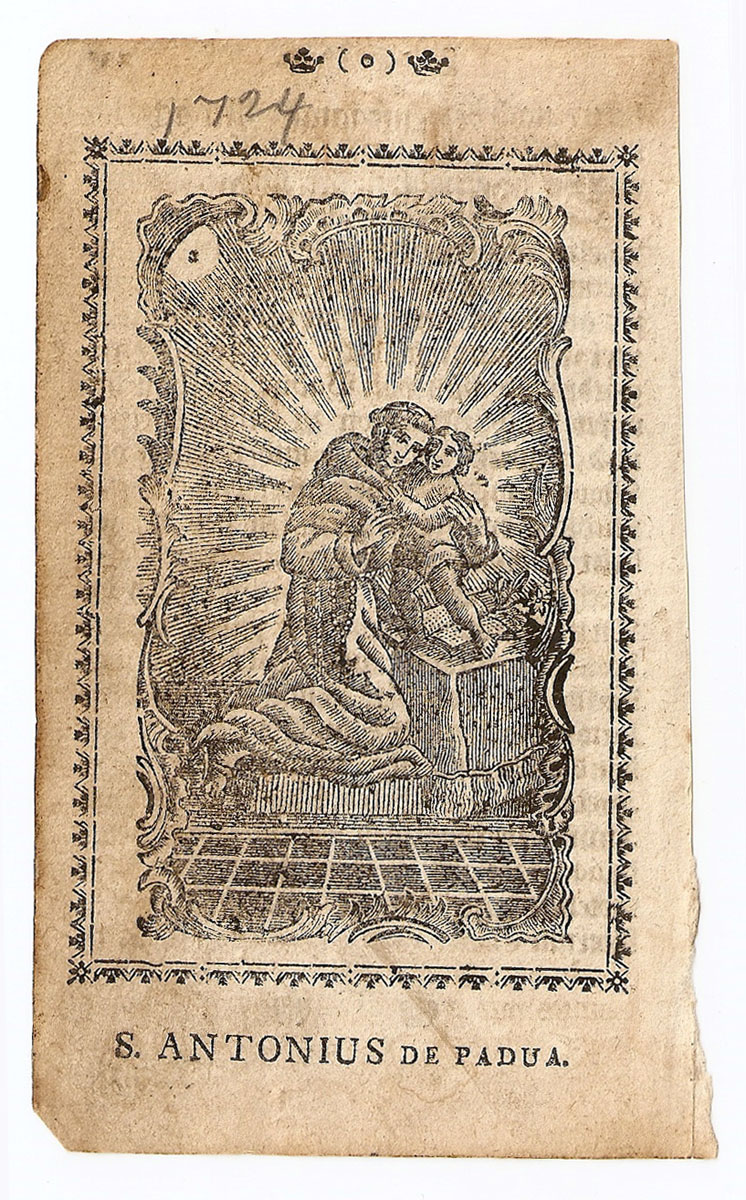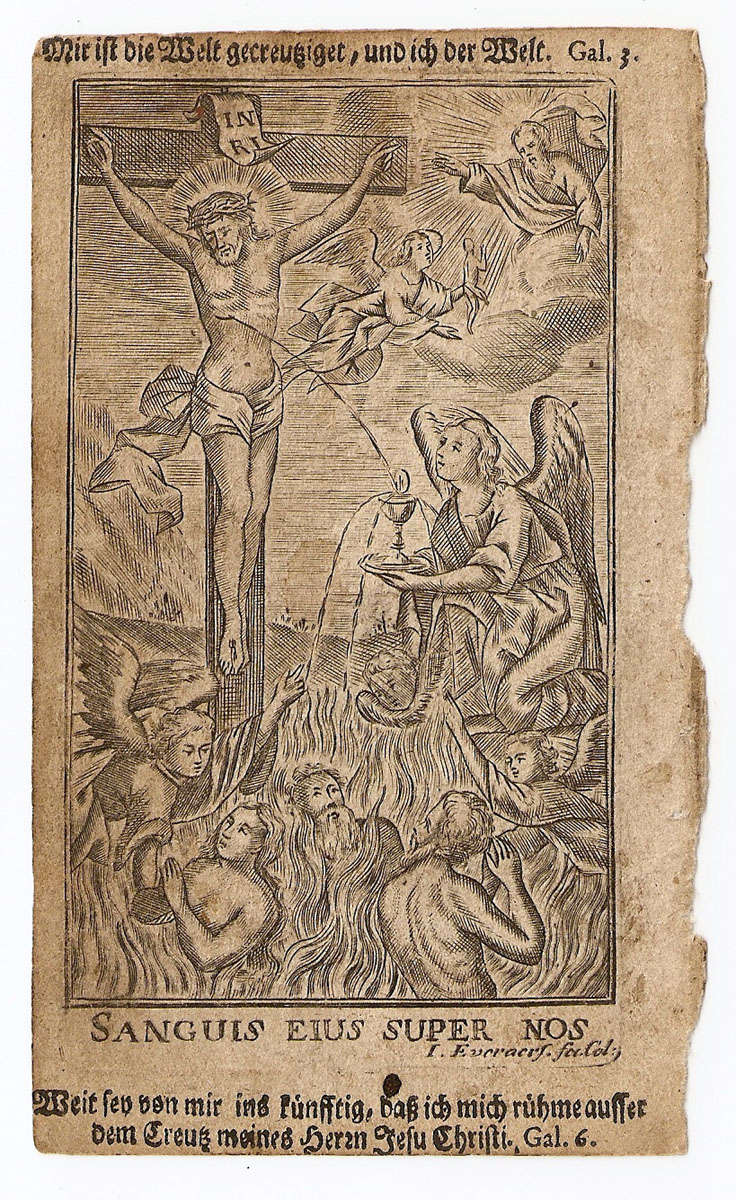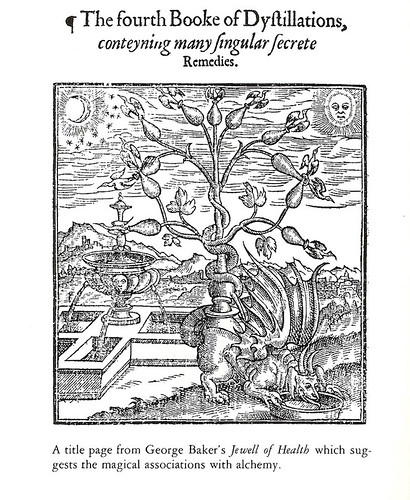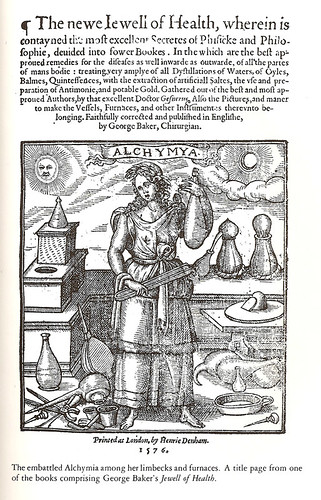Fragments. Remembrances. Scraps of cloth or small tokens attached to the handwritten records of foundling children were kept as a means of identification. It was hoped that these remembrances would be a means of one day uniting mother and child under more hopeful circumstances.
Occasionally, there were happy endings where the child was reclaimed, apprenticed, or adopted. However, more often than not, the foundling children immortalized in these unusual ledgers died young and were buried in unmarked graves. What almost all of them have in common is that this is all that is left of their existence, which is perhaps more of a mark than most people leave, even those who have happier beginnings or more successful lives. There are just bits of cloth, a ribbon or a button attached to the faded pages in a record book, something so practical and seemingly ordinary which have across time and upon rediscovery become completely fascinating. So beautiful and sad. Haunting.
Foundling 14695. An embroidered sampler left with a boy named William Porter, admitted on the 6th of December in 1759 and died on the 27th of May in 1760.
Captain Thomas Coram opened the Foundling Hospital in 1741 with a charter awarded to him by King George II. Artists William Hogworth, Joshua Reynolds, and Thomas Gainsborough along with composer George Frideric Handel were patrons of the endeavor, donating the proceeds from their works. The idea was revolutionary and progressive in its time. Desperate and destitute young mothers, who did not have the means to care for their children whether they were unmarried or widowed, were given the opportunity to house their children in a safe place with no questions asked and gifted with open invitation to reclaim their children when and if possible.
Many of these mothers were probably children themselves, in the worst of circumstances, who would otherwise have abandoned their infants on doorsteps or in the street, or watched them die of illness or starvation. Now given some bit of hope, represented by a scrap of cloth from a child’s garment or their own, young mothers left the hospital with a textile ticket and its exact match from the same piece of clothing was attached to a ledger recording the infant’s details and description, proof that this child was hers. There is some kind of magic there.
Foundling 16516. Patchwork made from printed and woven fabrics, embroidered with a heart and cut in half. One half was left with a boy who was admitted in 1767. He was named Benjamin Twirl by the Foundling Hospital. His mother Sara Bender reclaimed him on June 10th in 1775.
Foundling 14922. A bit of threadbare linen ‘flowered all over with playing cards’ left with a boy in 1759. He was named Joseph Floyd by the Foundling Hospital. He was apprenticed in 1769.
Foundling 14953. A boy was admitted on October 3rd of 1759 wearing ‘checkt stuff’ and was named Mentor Lesange by the Foundling Hospital. In 1770, he was apprenticed to a farmer named Hercules Durham.
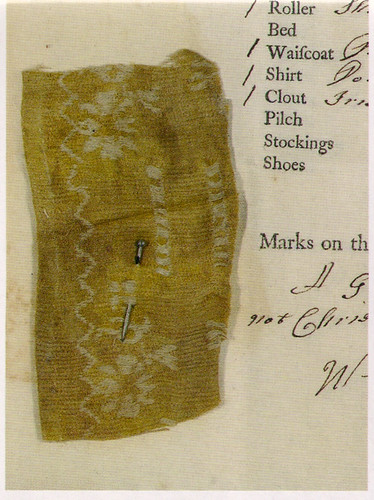
Foundling 13187. A girl of 14 days wearing ‘yellow satten flowered’ was admitted June 20th in 1759 and given the name Lucy Locket. She a died a few weeks later on July 2nd.
Foundling 10563. A girl was admitted on the 22nd of November in 1758 with heart cut from red woolen cloth pinned to her cap, probably cut from her mother’s dress or coat. She was named Isabel Crane and died a few weeks later on December 16th.
Foundling 2275. A boy admitted in September 1756 attached to a flowered silver ribbon with a paper note sewn into it and died the same month.
Apparently someone on the hospital staff folded the paper sheets into small packages of nine folds, most of which were never opened, and eventually collected into books. For this reason, they were accidentally preserved and rediscovered two and a half centuries later.
Sources:
Francis Spaulding, “Swatch with Mother”, The World of Interiors, March 2011, p 102 – 108
Shelly Goldsmith, “Scrap of a Thing”, Selvedge, Issue 36, p 37 – 40
http://www.johnstyles.pwp.blueyonder.co.uk/materiallondon.htm
http://www.foundlingmuseum.org.uk/exhibit_handel.php

